Wood Flooring Maintenance 101: Seasonal Care Guide for Indian Homes
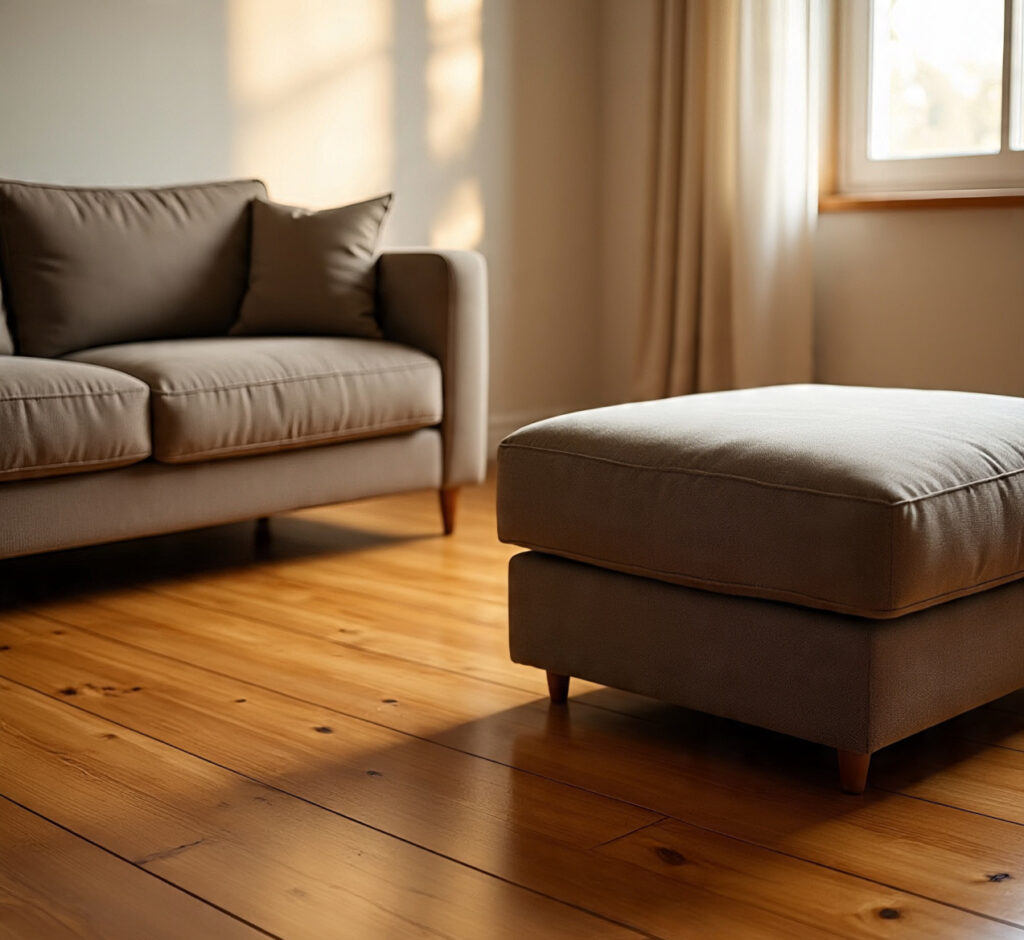
Wood Flooring Maintenance 101 Seasonal Care Guide for Indian Homes You’ve invested in beautiful wooden flooring, but are you protecting that investment? Many Bangalore homeowners watch their floors develop gaps, lose shine, or suffer water damage simply because they didn’t understand how wood responds to India’s climate changes. We don’t just install premium wood flooring—we help you maintain it for decades. Here’s your complete seasonal care guide tailored to Indian homes. Understanding Wood + Indian Climate Wood is hygroscopic—it absorbs and releases moisture based on humidity. Bangalore experiences: Monsoon: 80-90% humidity (wood expands) Summer: 30-50% humidity (wood contracts) Winter: 50-65% humidity (stable) These swings cause wooden flooring to expand in monsoons and shrink in dry seasons, creating gaps or warping if not properly managed. Daily & Weekly Essentials Daily (5 minutes): Sweep with soft-bristle broom or microfiber dust mop Wipe spills IMMEDIATELY—water is wood’s biggest enemy Never let liquids sit, even briefly Weekly: Vacuum with hard-floor attachment (no beater bars) Focus on high-traffic areas Use slightly damp (not wet) mop monthly with pH-neutral cleaner Critical Rule: Your mop should be almost dry. If floors take over 5 minutes to air-dry, you’ve used too much water. Monsoon Season Protection (June-September) Biggest Challenges: High humidity, water tracking, moisture damage Essential Actions: Control Humidity: Maintain 45-55% indoors using dehumidifiers and AC Entry Mat System: Place absorbent mats at all doors—shake/wash weekly Daily Inspection: Check for standing water, damp spots, musty odors Furniture Protection: Add rubber/felt pads under furniture legs Pro Tip: Engineered wood flooring is specifically designed for Indian monsoons with moisture-resistant cores, but even the best floors need these protective measures. Summer Season Care (March-May) Challenge: Heat and initial low humidity causing contraction Actions: Keep temperature consistent (24-28°C) Use curtains during peak heat (11 AM-3 PM) Increase cleaning frequency (more dust from dry conditions) Check/replace furniture pads Pre-monsoon prep: Deep clean and check finish integrity Winter Season Maintenance (December-February) Challenge: Dry air causing wood to contract and create gaps Solutions: Maintain 40-50% humidity with humidifiers Reduce damp mopping frequency Manage sunlight exposure with curtains Ideal time for professional maintenance and protective polish Normal vs. Problem Gaps: Small gaps (1-2mm) are normal in dry months and will close during monsoons. Gaps over 3mm indicate extremely low humidity or installation issues. What NEVER to Use ❌ Vinegar (erodes finish)❌ Ammonia cleaners❌ Steam mops (excessive moisture + heat)❌ Oil soaps (leave residue)❌ Excessive water❌ Wax on polyurethane finishes Safe to Use: ✓ pH-neutral hardwood floor cleaner✓ Microfiber mops✓ Soft-bristle broom✓ Manufacturer-approved products Long-Term Care Annual: Professional deep cleaning and inspectionEvery 7-10 years: Refinishing (extends to 15+ years with proper care) Professional Maintenance Services: Annual care plans with regular inspections Professional refinishing services Emergency repair response Product recommendations and ongoing support The Investment Math Annual Maintenance: ₹10,000-16,000/yearCost of Neglect: ₹1,50,000-5,00,000+ in repairs or replacement Why Trust Us? With 20+ years serving Bangalore, we offer: Premium teak, oak, and honne wood flooring Engineered wood perfect for Indian climates Professional installation with climate considerations Maintenance products and expert guidance Custom furniture and complete home solutions Visit: tfsworld.in | Showroom: Bangalore 7 Most Asked Questions About Wood Flooring Maintenance How often should I clean wooden flooring in Bangalore? Daily dry sweeping, weekly vacuuming, monthly damp mopping. Monsoons may need more frequent dry cleaning due to tracked moisture. How do I protect wood floors during monsoon? Maintain 45-55% indoor humidity with dehumidifiers, use entry mats, wipe water immediately, and improve ventilation. Engineered flooring is designed for Indian monsoons with moisture-resistant cores. Can I use vinegar to clean wood floors? No! Vinegar erodes protective finishes. Use only pH-neutral hardwood floor cleaners or manufacturer-recommended products. Why are there gaps between my floorboards? Normal during dry seasons (wood contracts). Maintain 35-55% humidity. Gaps over 3mm indicate extreme dryness or installation issues. How do I remove scratches from wooden flooring? Light scratches: Use matching wood stain pen. Deep scratches: Need professional sanding and refinishing. Prevent with furniture pads and trimmed pet nails. What humidity level is ideal for wooden flooring? 35-55% humidity year-round with 60-80°F temperature. Use dehumidifiers in monsoon, humidifiers in winter. Essential for floor longevity. How often does wooden flooring need refinishing? Every 7-10 years with proper care (extends to 15+ years in low-traffic areas). Signs: dull appearance, visible wear, scratches in wood, water stains. Related Post
5 Common Mistakes People Make When Buying Wooden Doors (And How to Avoid Them)
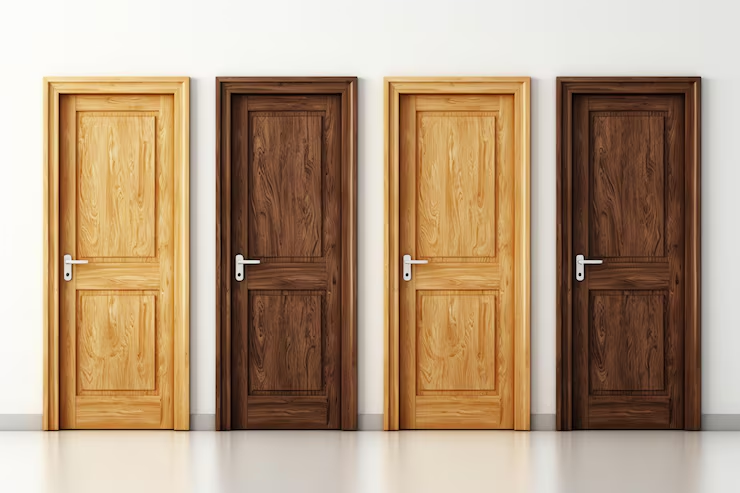
5 Common Mistakes People Make When Buying Wooden Doors (And How to Avoid Them) Buying a wooden door for your home seems straightforward until you realize how many things can go wrong. We’ve seen countless customers face issues that could have been easily avoided. Your main door isn’t just an entrance—it’s a long-term investment that affects your home’s security, aesthetics, and value. Whether you’re looking for teak wood doors in Bangalore or custom door designs, here are five critical mistakes to avoid: 1. Falling for Unrealistic Prices When someone offers you Burma teak wood at ₹3,000 per cubic foot (market rate: ₹9,500+), alarm bells should ring. Quality teak wood costs more for good reason—it’s durable, termite-resistant, and ages beautifully. Cheap prices usually mean inferior wood species, poor seasoning, or hidden defects. We believe in transparency over shortcuts. Tip: Always verify wood grade thoroughly. 2. Ignoring Moisture Content This is the silent killer of wooden doors. Bangalore’s climate swings from dry summers to heavy monsoons. If your door’s moisture content isn’t optimal (8-12% for interior, 12-15% for exterior), expect warping and swelling within months. Our Advantage: Every door undergoes controlled kiln-drying. Red Flag: Doors that feel heavy or have a musty smell likely have high moisture content. 3. Wrong Measurements = Costly Mistakes Measuring incorrectly is more common than you’d think. Many customers measure their old door instead of the door frame opening—a crucial error. The Right Way: Measure frame opening (not the old door) Take three measurements for height and width Note the smallest measurement Account for floor clearance Determine swing direction (left or right-hand) 4. Buying Components Separately Purchasing your door leaf, frame, hardware, and finishing from different vendors is a recipe for disaster. Mismatched wood species expand differently, colors don’t match, and warranty becomes a nightmare with everyone blaming someone else. 5. Skipping Proper Treatment & Finishing Good wood with poor treatment fails quickly. Essential treatments include anti-termite protection, anti-fungal coating, proper priming, and quality finish coats with UV protection. Remember: Finishing isn’t cosmetic—it’s your door’s armor against Bangalore’s climate. Why Choose Us? For over 20 years, we’ve been Bangalore’s trusted timber expert. We offer: Authentic Burma teak and Honne wood Complete door solutions (custom + ready-made) Teak wood main doors, pooja doors, interior doors Professional installation & lifetime support Custom furniture and wooden flooring Visit our Bangalore showroom or contact us at tfsworld.in for expert guidance on your wooden door needs. 7 Most Asked Questions About Buying Wooden Doors Which wood is best for main doors in India? Burma teak is the gold standard for durability and termite resistance. Honne wood offers great value. Choose based on budget and climate needs. What should teak wood door prices be in Bangalore? Genuine Burma teak ranges ₹9,500-₹15,000 per cubic foot. Complete main doors cost ₹45,000-₹1,20,000 including frame and hardware. Solid wood vs engineered wood doors—which is better? Solid wood is premium but needs more maintenance. Engineered wood doors offer better moisture resistance and stability at lower cost. How do I know if wood is properly seasoned? Check moisture content (8-12% for interior doors). Well-seasoned wood feels uniformly light, has no musty smell, and shows consistent color. Do wooden doors need special care in Bangalore? Yes. Apply wood polish annually, wipe water immediately, ensure proper ventilation. Quality teak wood doors need minimal maintenance due to natural oils. Can I get custom sizes and designs? Absolutely! Custom doors are available in any size, design, carving, or wood type. Visit showrooms to discuss your vision. How long do quality wooden doors last? With proper care, 25-40+ years. Burma teak doors often exceed 50 years with professional finishing and installation. Related Post
Teak Wood Main Door Price in Bangalore: Complete 2025 Price Guide
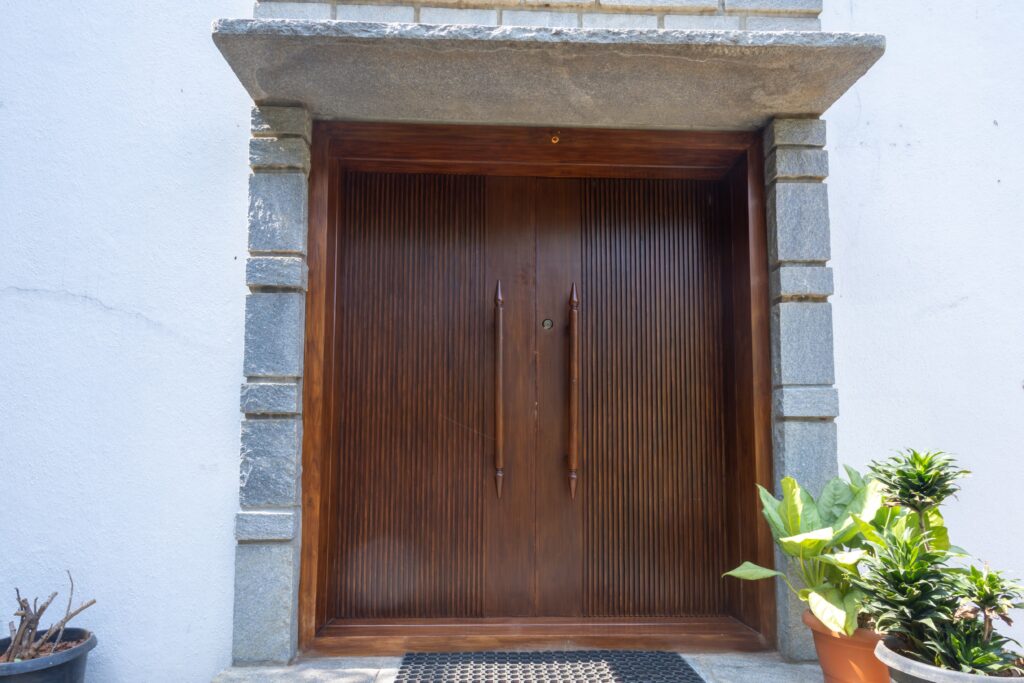
Teak Wood Main Door Price in Bangalore: Complete 2025 Price Guide Your main door is your home’s first impression and a long-term investment. If you’re researching teak wood main door price in Bangalore, this guide breaks down exactly what you’ll pay and why. Understanding the authentic teak wood main door price in Bangalore helps you budget smartly. Beautiful teak main door installed Teak Wood Main Door Price Range in Bangalore (2025) The teak wood main door price in Bangalore depends on multiple factors. Here’s what you can expect: Budget-Friendly Range: (Border Teak 2nd Quality) ₹23,000 and above Beautiful teak main door installed Wood: Teak | Size: 7′ x 3’6″ | Thickness: 32mm Design: Simple 2-4 panel, no carving | Polish Options: Melamine, PU Best For: Apartments, rental properties, budget-conscious homeowners Mid-Range Quality: Border Teak 1st Quality – ₹42,000 and above Mid-range carved teak door Wood: Quality Indian Border teak | Size: 7′ x 3’6″ to 8′ x 4′ | Thickness: 32-48mm Design: Moderate carving, traditional patterns | Polish Options: PU coating/quality polish Best For: Independent houses, most homeowners Price Examples: 7′ x 3’6″ x 32mm with moderate carving: ₹49,000 and above 8′ x 4′ x 32mm with traditional design: ₹64,000 and above Premium Range: ₹65,000 – ₹1,20,000 Mid-range carved teak door Wood: Burma teak | Size: 7′ x 3’6″ to 8′ x 4’6″ | Thickness: 45-50mm Design: Intricate hand-carved patterns | Finish: Hand-polished, premium PU Best For: Luxury villas, independent bungalows Price Examples: 7′ x 3’6″ x 45mm Burma teak, heavy carving: ₹75,000-85,000 8′ x 4′ x 50mm Burma teak, temple-style: ₹95,000-1,10,000 Ultra-Luxury Range: ₹1,20,000+ Luxury custom teak door Wood: Premium Burma teak | Custom sizes | Thickness: 50mm+ Design: Master craftsman artwork, fully customized Best For: Heritage homes, ultra-luxury properties INDICATIVE PRICE CHART 32MM 33-43 44 – 50 50+ THICKNESS MM BURMA 2500+ 3000+ 3500+ 4000+ PRICE/SFT BORDER 1600+ 2100+ 2600+ 3100+ PRICE/SFT What Factors Affect Teak Wood Main Door Price in Bangalore? Understanding what influences the teak wood main door price in Bangalore helps you make informed decisions: 1. Wood Grade & Source (30-40% of cost) Plantation Teak: ₹2,500-3,500/cft – Affordable, average quality Border or African Teak: ₹4,000-6,500/cft – Superior durability Burma Teak: ₹9500+/cft – Premium grade, best weather resistance Learn about the difference between teak and Burma teak. 2. Size & Dimensions (20-25% of cost) Standard 7′ x 3’6″: Base pricing 8′ x 4′: +25-30% | 9′ x 4’6″: +40-50% Double doors (8′ x 7′): +80-100% Arched tops: +₹8,000-15,000 (depending on the teak grade) 3. Design Complexity (15-25% of cost) Different carving levels Simple Panel: No extra cost Light Carving: +₹5,000-10,000 Moderate Carving: +₹12,000-20,000 Heavy Carving: +₹25,000-50,000 Custom Artistic: +₹50,000-1,00,000+ 4. Finish & Treatment (5-10% of cost) Natural Polish: ₹5,000 and above Melamine: ₹8,000 and above PU Coating: ₹12,000 and above Antique Look: ₹15,000 and above Custom vs Ready-Made: Price Comparison Ready-Made Doors: ₹23,000 and above ✅ Available in 1-2 weeks | ✅ See before buying❌ Limited sizes | ❌ Limited designs Custom Doors: ₹45,000 and above ✅ Perfect fit | ✅ Complete design freedom❌ 6-8 weeks lead time | ❌ Higher investment Read: Custom vs Ready-Made Doors Additional Costs to Consider Door Frame: ₹8,000-25,000 Hardware: ₹3,000-15,000 Installation: ₹2,000-5,000 Transportation: ₹1,000-3,000 Accessories: ₹500-2,000 Total Additional: ₹14,500-50,000 Money-Saving Tips Stick to standard sizes (7′ x 3’6″) Simple designs save ₹25K-50K Consider border teak for Bangalore’s climate (budget friendly) Bundle door + frame for discounts Compare 3-5 vendors (prices vary 20-30%) (always choose the best quality) 🚩 Red Flags When Shopping ❌ Prices below ₹15,000 for “Burma teak”❌ Vague wood source information❌ Reluctance to show samples❌ No warranty offered❌ Can’t visit workshop Your Smart Shopping Checklist ✅ Written quote with wood grade specified✅ Exact dimensions confirmed✅ Design approved with samples✅ Warranty period (minimum 1 year)✅ Installation terms clear✅ Hardware specifications listed✅ Realistic delivery timeline✅ Visit workshop to verify quality Related Post Frequently Asked Questions (FAQs) Q1: What is the average teak wood main door price in Bangalore? The average teak wood main door price in Bangalore for a standard 7′ x 3’6″ door ranges from ₹22,000-28,000 for plantation teak, ₹42,000-56,000 for Indian teak, and ₹75,000-98,000 for Burma teak with moderate carving. Q2: Is Burma teak worth the extra cost for Bangalore climate? For Bangalore’s moderate climate, quality plantation or Indian teak performs excellently. Burma teak is worth it for luxury properties or if you want that distinctive rich golden color and maximum longevity (50+ years). Q3: How much does a 32mm vs 45mm teak door cost in Bangalore? The teak wood main door price in Bangalore for 32mm thickness ranges from ₹18,000-35,000, while 45mm costs ₹65,000-1,20,000. The difference reflects wood quality, security, and craftsmanship. Q4: What’s included in the teak door price? Typically just the door shutter. Door frames, hardware, installation, and transportation are additional costs ranging from ₹14,500-50,000 total. Q5: How long does a custom teak door take in Bangalore? Custom doors require 6-8 weeks: 1-2 weeks for wood seasoning, 2-3 weeks for carving, 1-2 weeks for finishing, plus 1 week for installation coordination. – Q6: Can I get a teak door under ₹25,000 in Bangalore? Yes, the border teak wood main door price in Bangalore starts from ₹38,500 and above for basic Border teak doors (7′ x 3’6″ x 32mm) with simple panel design. Check vendors at TFS Worldfor authentic pricing. Q7: What’s the price difference between single and double teak doors in Bangalore? The teak wood main door price in Bangalore for double doors (8′ x 7′ combined) costs 80-100% more than single doors due to doubled material and complex installation. Budget ₹85,000-2,00,000+ depending on quality. Q8: Do teak door prices include installation? Most vendors charge separately for installation (₹2,000-5,000). Always clarify in your quote. Some premium vendors include installation for orders above ₹75,000. Q9: How do I verify if I’m getting genuine Burma teak? Ask for wood certification, check for leather-like smell, golden-brown color
Best Wood for Furniture in India: The Complete Comparison Guide

Best Wood for Furniture in India: The Complete Comparison Guide Choosing the best wood for furniture in India is crucial for durability, aesthetics, and value. This guide covers the top 10 wood types to help you make informed decisions for your home. Different wood samples comparison Which is the Best Wood for Furniture in India? When searching for the best wood for furniture in India, the answer depends on your budget, climate, furniture type, and maintenance needs. Understanding these factors helps you identify the best wood for furniture in India for your home: Durability: Measured by Janka hardness rating Moisture resistance: Critical for Indian climates Termite resistance: Natural oils protect premium woods Grain aesthetics: Affects appearance and finishing Price-to-value ratio: Long-term cost per year of use Best Wood for Furniture in India Discovering the best wood for furniture in India requires understanding each type’s unique characteristics: 1. Teak Wood – The Premium Choice Teak wood furniture Price: ₹4,500 up/cft | Durability: ⭐⭐⭐⭐⭐️ Features: Golden-brown, water/termite-resistant, 50+ years lifespan Best For: Main doors, outdoor furniture, dining tables Learn about Burma teak quality 2. Sheesham (Rosewood) – The Balanced Option – Indian Rosewood Sheesham furniture Price: ₹1,500-3,000/cft | Durability: ⭐⭐⭐⭐ Generally used only in North India Always dark in colour, cannot be polished in light colour Features: Reddish-brown grain, strong, termite-resistant Best For: Study tables, bookshelves, TV units, dining sets 3. Oak Wood – The Elegant Import Oak furniture Price: ₹2,800-5,000+/cft | Durability: ⭐⭐⭐⭐ Features: Premium grain, water-resistant, timeless appeal Best For: Executive desks, luxury dining tables 4. Mahogany – The Luxury Classic Mahogany furniture Price: ₹1,500-3,000+/cft | Durability: ⭐⭐⭐⭐⭐ Features: Rich reddish-brown, rot-resistant (depends on the area its grown) Best For: Luxury bedroom sets, antique furniture 5. Walnut – The Dark Beauty Walnut furniture Price: ₹4,000-8,000+/cft | Durability: ⭐⭐⭐⭐ Features: Deep chocolate color, fine grain Best For: Statement pieces, luxury living rooms 6. Pine Wood – The Budget Option Pine furniture Price: ₹500-1,200/cft | Durability: ⭐⭐ Features: Light color, affordable, easy to work with Best For: Children’s furniture, painted pieces Related Post Frequently Asked Questions (FAQs) Q1: Which is the most durable wood for furniture in India? Teak and Oak are considered the best wood for furniture in India in terms of durability, with 50+ year lifespans and excellent termite/moisture resistance. Q2: Is sheesham better than teak for furniture? Teak is superior in durability, but sheesham offers excellent value at 40-50% lower cost. For indoor furniture with proper care, sheesham performs admirably. Q3: What is the most affordable wood for furniture? Pine and rubber wood are the most budget-friendly. Q4: Which wood is best for humid climates like coastal areas? Teak is ideal for coastal/humid regions due to natural oil content. Q5: How can I identify genuine teak wood? Genuine teak has golden-brown color, distinctive grain, leather-like smell, and natural oiliness. Check for weight, water resistance, and ask for certification. Read our guide on identifying Burma teak. Q7: What’s the difference between hardwood and softwood? Hardwoods (teak, oak, mahogany) come from deciduous trees, are denser and more durable. Softwoods (pine) come from evergreens, are lighter and less expensive. Learn more at Wood Database. Q8: How often should I maintain wooden furniture? Teak: Oil once yearly (teak if in outdoors and depends on sun &rain exposure) Sheesham/Oak: Polish every 6 months (Cannot keep outdoors) All woods benefit from regular dusting and immediate spill cleanup. Q9: Can I use any wood for outdoor furniture? No. Only teak and properly treated sal are suitable for outdoor use in India. Other woods will warp, crack, or develop fungus under sun and monsoon exposure. Q10: Is bamboo furniture as durable as wood? Strand-woven bamboo (Janka 1,180-1,380) rivals oak in hardness. However, it’s more sensitive to humidity changes than premium hardwoods. Best for controlled indoor environments. Ready to Invest in Quality Furniture? Now that you know the best wood for furniture in India, it’s time to make your choice! At TFS World, we specialize in premium Burma teak and quality timber. From custom doors to exquisite furniture, every piece is crafted with care. 📞 Get Expert Guidance Today! Visit our showroom: Metro Pillar No. 497, Near Jnana Bharathi Metro Station, Off Mysore Road, Bangalore – 560039 Explore our collection: Browse premium Burma teak furniture at Tikovina Need help choosing? Contact us for personalized recommendations based on your requirements, budget, and climate. 👉 View Our Latest Teak Wood Prices in Bangalore | Explore Custom Door Options Transform your space with furniture that lasts generations!
Teak Wood Price in Bangalore – Latest Rates & Quality Options
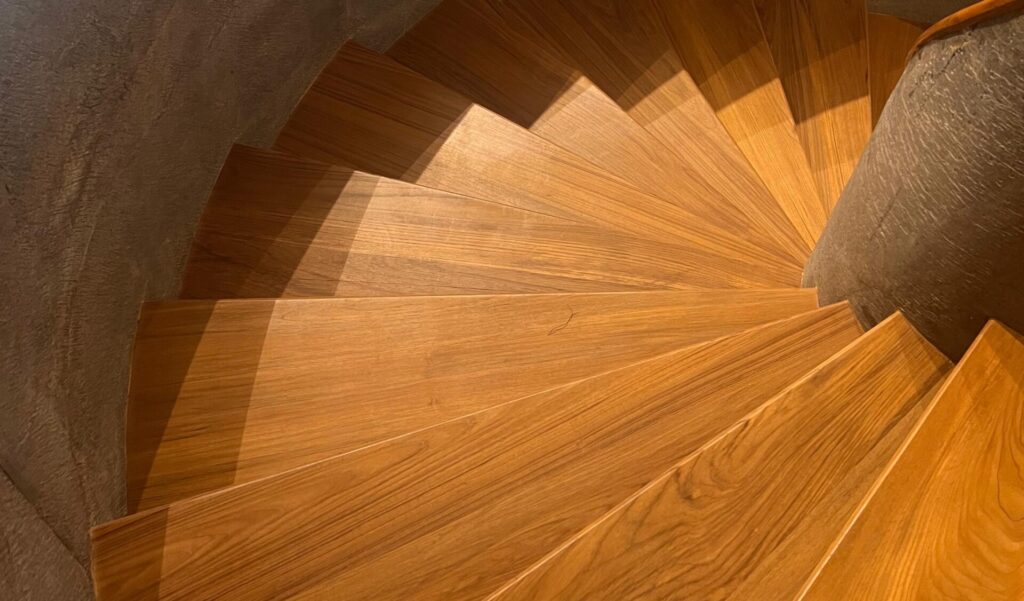
Teak Wood Price in Bangalore – Latest Rates & Quality Options Timber market When you walk through the timber markets of Bangalore, you’ll hear whispers of different teak varieties and prices that can make your head spin. Let’s sit down and have an honest conversation about what you’ll actually pay for teak wood in our beautiful city. The Real Story Behind Teak Pricing You know how everyone talks about Burma teak wood price in Bangalore like it’s some mysterious secret? Here’s the truth – genuine Burma teak will cost you anywhere from ₹9,500 upwards per cubic foot. Yes, it’s expensive, but there’s a reason craftsmen call it the king of woods. Now, if someone offers you Burma teak at ₹3,000 per cubic foot, pause and think. That golden-brown beauty with its tight grain doesn’t come cheap. What you might be looking at is what the market cleverly calls “Border Teak” – which is actually African teak that found its way to our markets when Burma stopped exporting. Let’s Talk About What You’ll Actually Pay When you’re planning that dream home and wondering about Burma Teak Main Door price in Bangalore, expect a budget of not less than Rs. 2500 per square foot. The price varies based on the design complexity and the finishing you choose. For those beautiful teak wood sofa sets, you’re looking at anywhere from ₹25,000 for a simple three-seater to over ₹1,50,000 for an elaborate set in premium Burma teak. The teak wood sofa price in Bangalore really depends on the craftsmanship and wood grade you select. If you’re working with a tighter budget, Ghana teak wood price in Bangalore starts around ₹2000 per cubic foot. Burma, Border & Ghana Teak: Quality and Pricing Until 2014, there was an abundant flow of Burma Teak Logs into India. But, the Burmese Government banned exports in 2014 and it was a big jolt to the Indian Teak Market. There are a few countries in Africa and Latin America (in the tropical regions) like Togo, Sudan, Tanzania, Ivory Coast, Ghana, Liberia, Panama, Costa Rica, Colombia, Brazil etc that also have teak reserves and they increased exports to India after 2014. Even, their quality did not match Burma Teak quality, teak from a few of these African origins was good enough to replace Burma Teak in a market which was desperate for Burma Teak. The trade name coined by a few traders for these African-origin Teak is ‘Burma Border Teak’. Door and Frame made in Border Teak The word ‘Border’ denotes a quality parameter and not a geographical parameter. The teak from the rest of the origins is all considered ‘C’ Grade and the trade name for these is ‘Ghana Teak’. The broad pricing of various teaks is as follows: Burma Teak = Upwards of Rs. 9500/CFT Border Teak = Upwards of Rs. 4500/CFT Ghana Teak = Around Rs. 2500/CFT Ghana teak Some Friendly Advice from the Market When calculating teak wood price per cft in Bangalore, remember to factor in transportation, cutting charges, and taxes. These can add 15-20% to your final bill. Making Smart Choices Whether you’re furnishing a cosy apartment or building your dream villa, teak remains a beautiful investment. The golden hue deepens with age, and that distinctive woody fragrance never fades. Swing made in Burma teak Visit multiple suppliers like TFS World, touch the wood, smell it, and trust your instincts. Good teak has a story to tell – from the forests where it grew to the skilled hands that will craft it into something beautiful for your home. Remember, buying teak isn’t just about getting the best price per cubic foot. It’s about bringing a piece of nature’s artistry into your space, something that will grow more beautiful with every passing year. Related Post
What is the Difference Between Sawnwood and Thermowood?
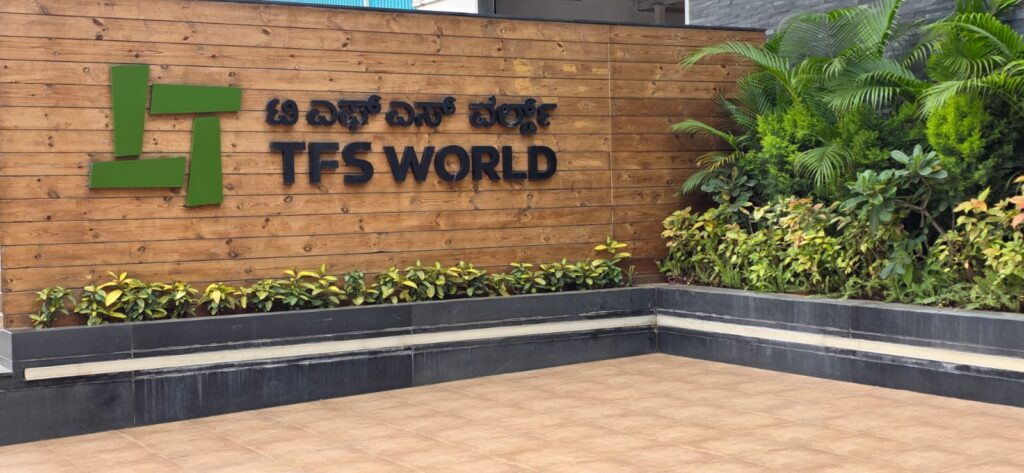
What is the Difference Between Sawnwood and Thermowood? The Heat Treatment Revolution: Sawnwood vs Thermowood Explained “What exactly is thermowood?” This question comes up daily at our showroom. It represents one of the biggest innovations in timber treatment we’ve seen in years. Let’s break down what makes these two options different and when each makes sense. Understanding Sawnwood Sawnwood is timber in its natural state after being cut. It retains all natural characteristics – both good and challenging. Characteristics: Natural wood color and grain Standard moisture behavior Traditional workability Natural oils intact The Thermowood Innovation Thermowood undergoes controlled heat treatment at 160°C to 230°C in reduced oxygen conditions. This modifies the wood’s cellular structure permanently. The Process: Initial heating to 100°C with steam Heat treatment at 160-230°C for 2-4 hours Gradual cooling with moisture reintroduction Final moisture content: 4-7% Key Differences That Matter Moisture Stability – The Game Changer Heat treatment reduces moisture absorption by 40-60%. Sawnwood: Expands/contracts with seasons, requires regular maintenance Thermowood: Much more stable, fewer gaps, less warping Durability Heat treatment destroys nutrients that fungi need. Sawnwood: Relies on natural resistance (varies by species) Thermowood: Enhanced rot resistance, lasts 2-3 times longer outdoors Appearance Sawnwood: Natural species color Thermowood: Develops rich, darker tones permanently Weight Thermowood: Typically 5-12% lighter while maintaining strength Real-World Performance From our Bangalore projects: Outdoor Decking: Sawnwood: Annual maintenance, gaps after monsoon Thermowood: Minimal movement, 2-3 year maintenance intervals Exterior Siding: Sawnwood: Paint failure in 2-3 years, shrinkage gaps Thermowood: Longer-lasting coatings, fewer issues Thermopine Cost Reality Initial Investment: Thermowood costs 20-40% more Long-term: Reduced maintenance often justifies premium over 10-15 years Making Your Decision Choose based on: Performance expectations Maintenance tolerance Budget considerations Environmental conditions Thermowood offers genuine performance improvements for specific applications. Understanding when it provides value helps you make better material decisions. Also, note that not all species are subjected to Thermo treatment. Curious about the difference? Visit our showroom where we have sawnwood and thermowood samples of the same species for direct comparison. Related Post
Best Wood For Furniture: 12 Expert Picks You Should Know
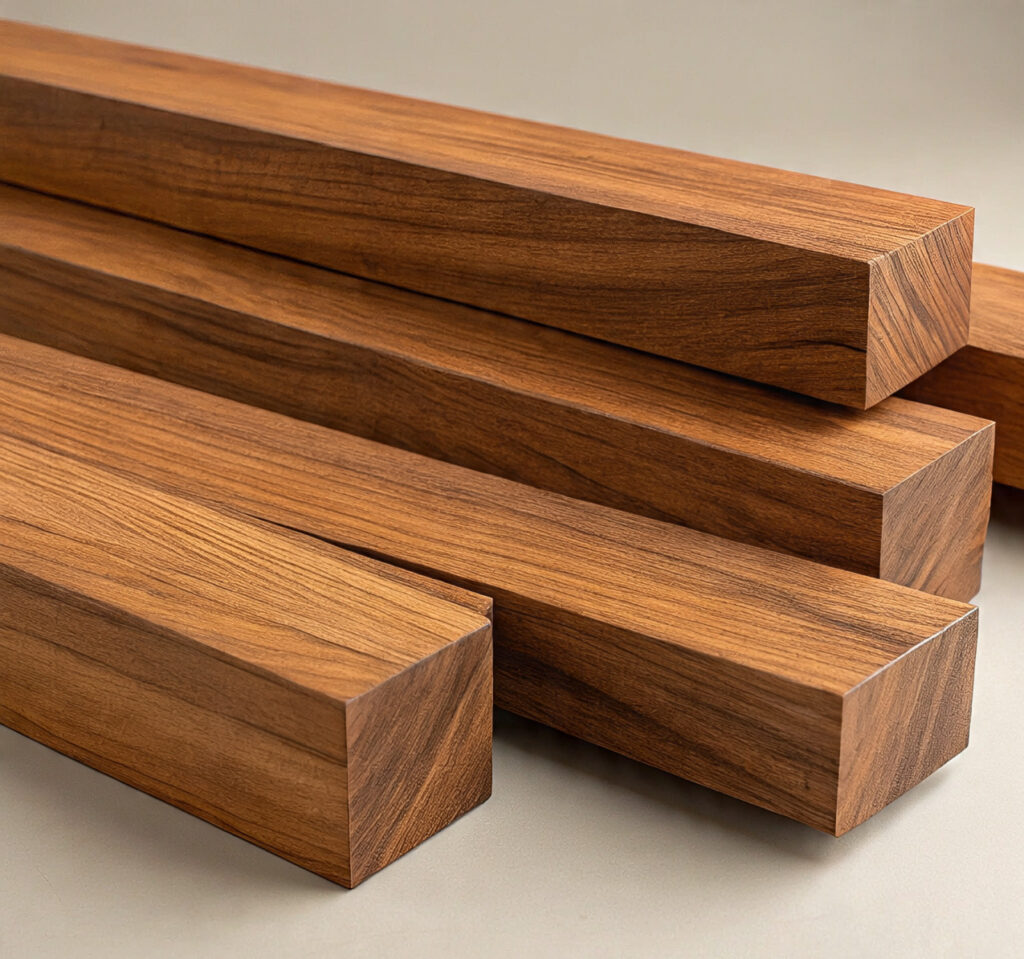
Best Wood For Furniture: 12 Expert Picks You Should Know The Furniture Maker’s Guide: 12 Woods That Actually Deliver Choosing the right wood for furniture is like picking the foundation for your home – everything depends on getting this decision right. After two decades in the timber industry, here are the 12 woods that consistently deliver quality results. Burma Teak The Premium Champions 1. Burma Teak – The King Natural oil content, tight grain, and that signature honey color make it perfect for both indoor and outdoor furniture. Zero termite issues and minimal maintenance required. Best for: Outdoor furniture, dining tables, premium flooring, construction applications like door frames and shutters, and other furniture. 2. Indian Rosewood – The Artist’s Choice Rich chocolate-brown color with darker streaking makes every piece unique. Exceptional workability and natural finish beauty. Best for: Carved furniture, decorative pieces 3. Mahogany – The Classic Consistent grain patterns and excellent workability. The backbone of quality furniture for centuries. Best for: Traditional furniture, cabinets Mahogany wood The Smart Range Options 4. Sheesham – Great Value Similar beauty to premium rosewood at a fraction of the cost. Durable with attractive grain patterns. Best for: Dining sets, bedroom furniture 5. Mango Wood – The Eco Star Once considered waste, now recognized for interesting grain patterns and sustainability. Best for: Casual furniture, rustic designs 6. Acacia – Outdoor Warrior Naturally resistant to rot and insects. Our go-to for outdoor furniture without Burma Teak pricing. It has a blending and warping tendency. Best for: Garden furniture, decking Walnut Wood International Favorites 7. Walnut – Luxury Appeal Rich brown color and straight grain create attention-commanding pieces. Best for: High-end furniture, accent pieces 8. Oak – Time-Tested Strength and distinctive grain patterns. A furniture staple for generations. Best for: Traditional furniture, heavy-duty applications 9. Cherry – The Aging Beauty Develops rich patina over time, starting light and deepening to reddish-brown. Best for: Fine furniture, kitchen cabinets Pine Wood Budget-Friendly Performers 10. Rubber Wood – Engineered Solution Consistent, light-colored wood perfect for painted or stained pieces. Remember to use it only after treatment and seasoning. Best for: Children’s furniture, budget projects 11. Pine – Beginner’s Friend Easy to work with and readily available. Great for casual applications. Best for: DIY projects, temporary pieces 12. Bamboo – Future Forward Rapid renewability and strength make it increasingly popular. Best for: Modern designs, eco-conscious projects Our Selection Process When recommending wood, we consider: How long should the piece last? Indoor or outdoor use? Maintenance tolerance? Budget range? Style preference? Aesthetics Bending and Warping Tendency The Reality Check The “best” wood depends on your specific needs. Burma Teak isn’t necessary for a child’s study table, just as pine won’t work for outdoor dining furniture. Our Process: Define furniture function Set budget range Consider environment Match wood to requirements Factor maintenance expectations Great furniture starts with choosing the right wood for your situation, not necessarily the most expensive one. Visit our Bangalore showroom to compare woods side by side. Nothing beats feeling the difference yourself. Related Post
What is the Difference Between Teak and Burma Teak Wood?
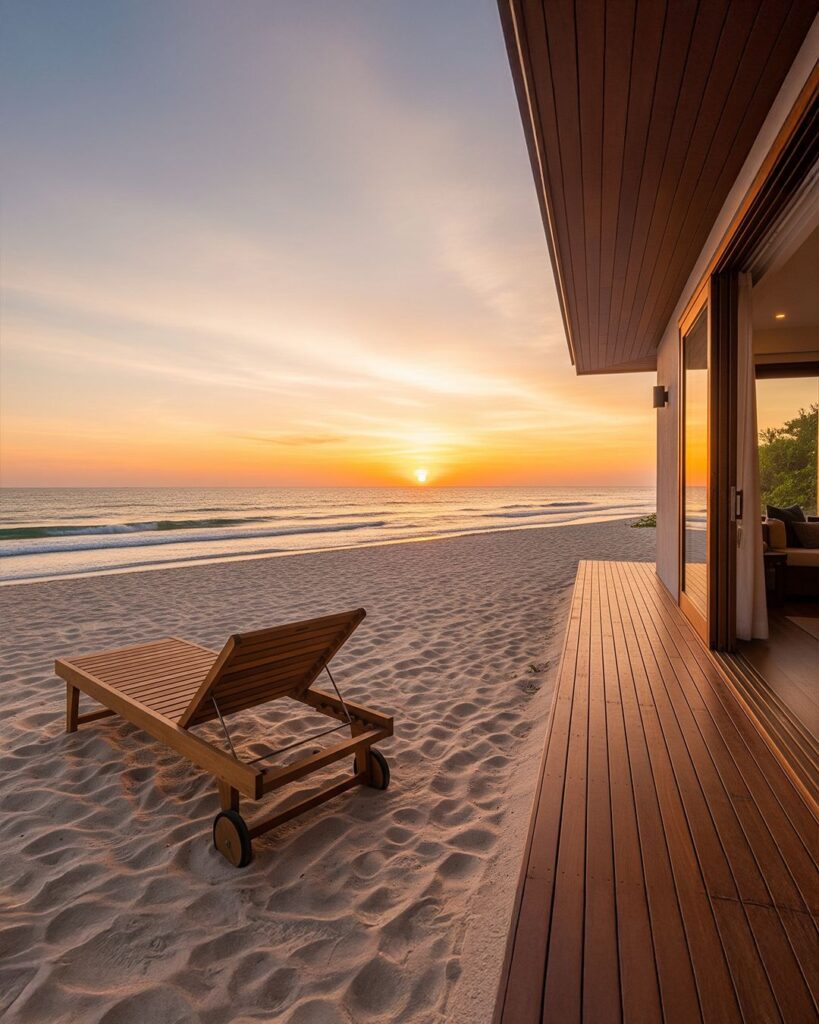
What is the Difference Between Teak and Burma Teak Wood? Teak vs Burma Teak: The Real Story Behind the Price Difference Ever wondered why some teak costs three times more than others? Walk into any timber market in Bangalore, and you’ll hear passionate debates about Burma Teak versus other teak. After years of handling both varieties at TFS World, we’re here to clear up the confusion once and for all. The Origin Story Regular Teak grows in plantations across India, Africa, and Latin America. These trees are harvested after 25-40 years of controlled cultivation. Burma Teak comes from the natural forests of Myanmar, where trees grow for 100 years in their native habitat. Also, during the British colonial era, over a century ago, vast teak plantations were established in Burma. Many of these trees, planted more than 100 years ago, have now reached full maturity and are being sustainably harvested, adding to the legacy and exceptional quality of Burma Teak. This extended growing period makes all the difference. What Makes Burma Teak Special? Higher Oil Content Burma Teak contains significantly more natural oils. Touch a piece, and you’ll actually feel the oily texture. This oil acts as nature’s preservative, providing superior resistance to termites and moisture. Denser Wood Structure The longer growing period creates tighter grain and higher density. Burma Teak feels noticeably heavier – experienced craftsmen can identify it just by lifting a piece. Better Aging Fresh Burma Teak displays a rich golden-brown color that deepens beautifully over time, developing what we call the “honey glow.” Plantation teak often shows more color variation and doesn’t age as gracefully. Real Performance Differences In our showroom experience: Outdoor Furniture: Burma Teak maintains structural integrity for decades with minimal maintenance Flooring: Shows less shrinkage and fewer gaps over time Durability: Lasts 2-3 times longer in outdoor conditions The Price Reality Yes, Burma Teak costs 2-3 times more than other teak. But calculate the cost per year of use – Burma Teak often proves more economical due to longevity and minimal maintenance. When to Choose What? Choose Burma Teak for: Outdoor furniture that needs to last decades High-traffic flooring areas Premium, long-term investment Aesthetics Choose Other Teak for: Indoor applications with controlled conditions Budget-conscious projects Large commercial quantities When you are okay with darker grains and knots Our Honest Take Both varieties have their place in the market. Burma Teak isn’t just expensive marketing – it’s genuinely superior timber with characteristics that justify the premium. But other teak, when sourced properly, serves many applications beautifully. At TFS World, we’re transparent about what grade you’re purchasing. This honesty has built trust with our clients over the years. Want to feel the difference yourself? Visit our Bangalore showroom where you can compare varieties side by side. Related Post
What is Air Drying in Timber?
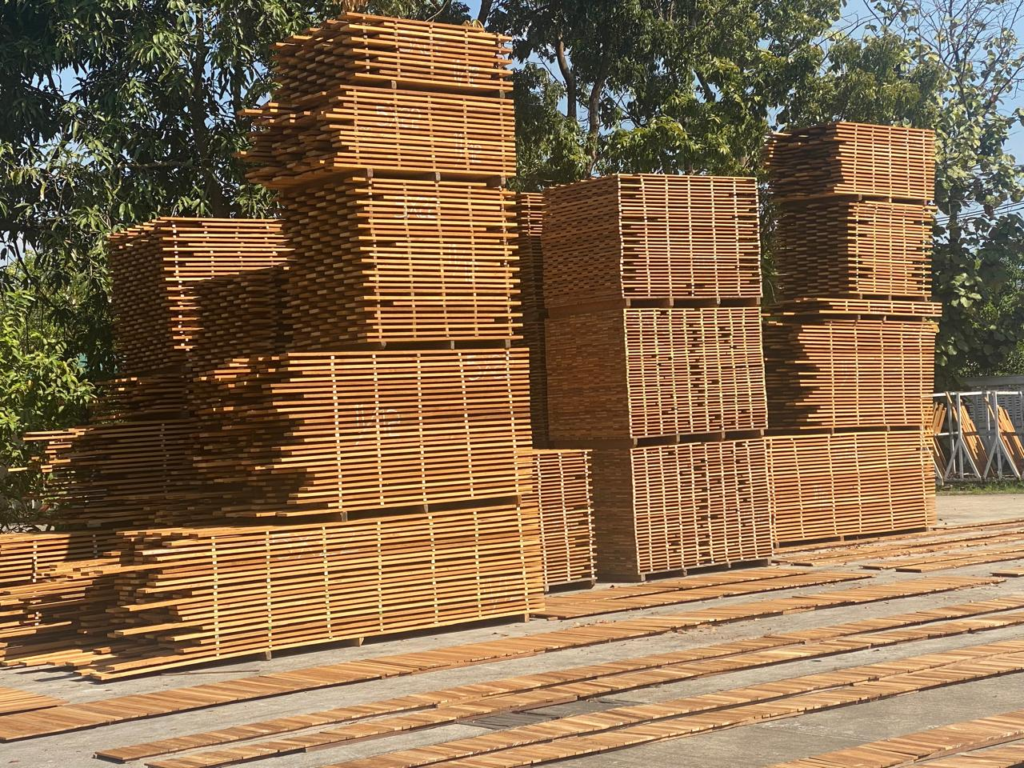
What is Air Drying in Timber? Air drying is one of the most traditional and cost-effective methods used to reduce the moisture content in timber. It involves exposing freshly cut wood to natural air circulation, allowing the moisture to evaporate over time. This process is crucial in preparing timber for various uses, ensuring that the wood becomes stable and durable for construction, furniture making, or other applications. How Air Drying Works The air-drying process begins after timber is harvested and sawn into manageable sizes. The wood is then stacked in a specific arrangement to promote efficient air circulation. Key elements of this arrangement include: Proper Stacking: Timber pieces are stacked with spaces (known as stickers) between them. This ensures that air flows freely around each piece. Location: The drying area must be well-ventilated, protected from direct sunlight, rain, and excessive humidity to prevent rapid drying or cracking. Orientation: Timber stacks are often oriented in a way that takes advantage of prevailing winds to enhance airflow. Benefits of Air Drying Air drying offers several advantages for the timber industry: Cost-Effective: It requires minimal equipment, making it an economical choice for smaller-scale operations or traditional timber yards. Eco-Friendly: Since it relies on natural air circulation, it does not require electricity or fuel consumption, making it environmentally sustainable. Improved Quality: Gradual moisture removal minimizes the risk of warping, splitting, or other defects that can occur with faster drying methods. Challenges of Air Drying Challenges of Air Drying Time-Intensive: The process can take several months to years, depending on the type of wood and environmental conditions. Weather Dependence: Unpredictable weather, such as excessive rain or humidity, can delay the drying process or lead to uneven drying. Limited Control: Unlike kiln drying, air drying does not allow precise control over moisture content, making it less suitable for applications requiring extremely dry wood. Conclusion Air drying remains an essential method in the timber industry, especially for those who value cost-efficiency and eco-friendliness. While it may require patience and careful management, the quality and sustainability of air-dried timber make it a preferred choice for many craftsmen and builders. For industries that aim to balance tradition and functionality, air drying is a timeless and reliable technique. Related Post
Why Burma Teak is the King of Wooden Flooring Materials
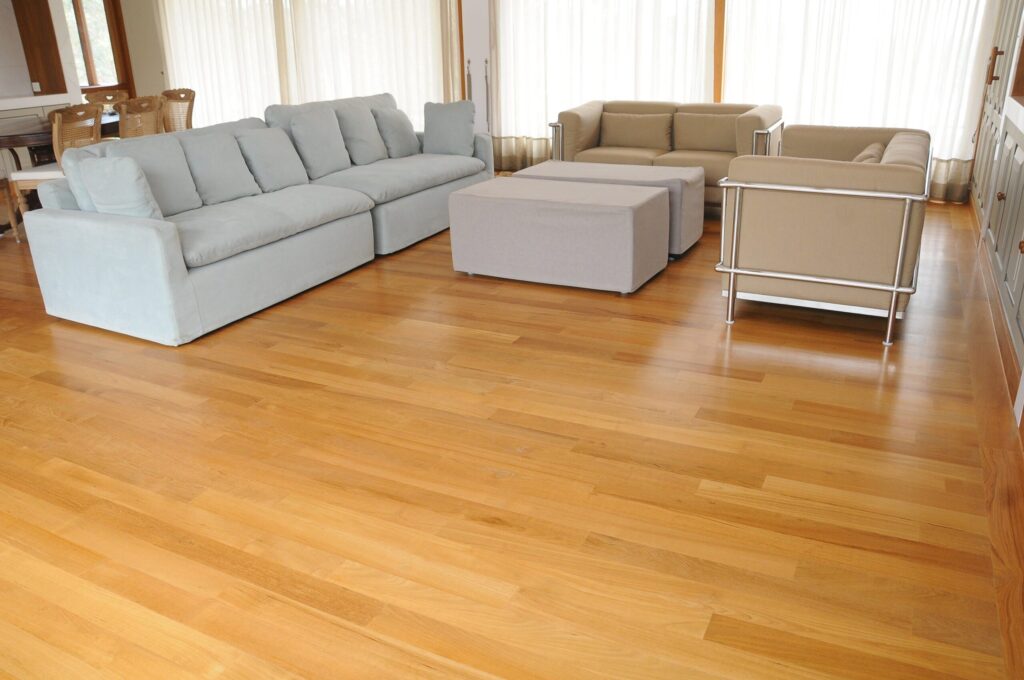
Why Burma Teak is the King of Wooden Flooring Materials When it comes to choosing the perfect material for wooden flooring, discerning homeowners, architects, and designers often turn to one name that has stood the test of time — Burma Teak. Known for its rich texture, golden hue, and unmatched durability, Burma Teak has earned a royal status in the world of wood. But what makes it so special? Let’s explore why Burma Teak is considered the king of wooden flooring materials. 1. Natural Strength and Durability Burma Teak (also known as Tectona Grandis) is naturally dense and oily, which makes it resistant to termites, decay, and warping. This makes it an ideal choice for both indoor and semi-outdoor flooring, especially in climates with high humidity. 2. Timeless Beauty and Grain Patterns Its signature golden-brown tone deepens with age, adding warmth and luxury to interiors. The natural grain of Burma Teak is fine and straight, giving floors a sophisticated look that never goes out of style. It complements both traditional and modern décor. 3. Low Maintenance Thanks to its high natural oil content, Burma Teak flooring is incredibly easy to maintain. It repels moisture and stains better than most other hardwoods, and a simple routine of dry mopping and occasional polishing is all it takes to keep it shining. 4. Weather Resistance Unlike many hardwoods, Burma Teak handles temperature fluctuations and moisture beautifully. Its resistance to shrinking and expansion means fewer gaps and cracks, which makes it a preferred choice even in tropical or coastal homes. 5. Eco-Friendly and Long-Lasting Investment High-quality Burma Teak, when sourced responsibly, is a sustainable choice due to its longevity. A single installation can last for generations, reducing the need for replacement and saving resources in the long run. 6. Prestige and Value Addition Choosing Burma Teak flooring isn’t just about performance — it’s about making a statement. Its timeless elegance adds value to your property and appeals to those who appreciate craftsmanship and natural luxury. Conclusion Burma Teak is not just a flooring material — it’s an investment in quality, comfort, and class. With its unmatched durability, aesthetic charm, and ability to age gracefully, it’s no surprise that Burma Teak is revered as the king of wooden flooring. Whether you’re building a new home or renovating your space, choosing Burma Teak flooring guarantees style that stands strong for generations. Related Post


